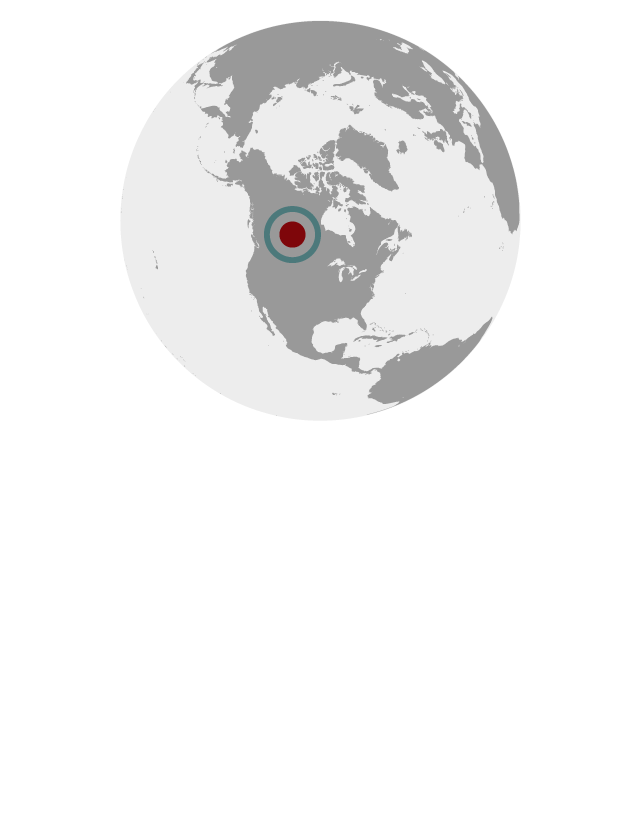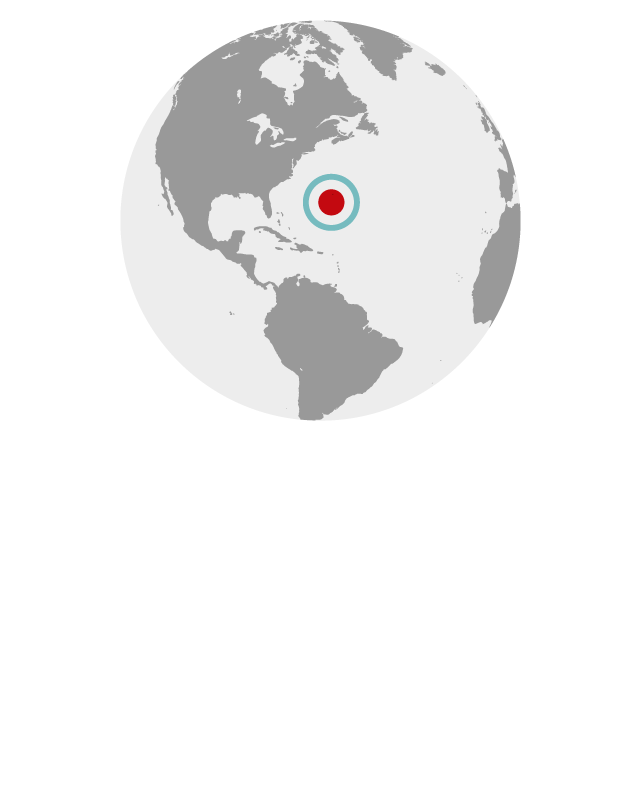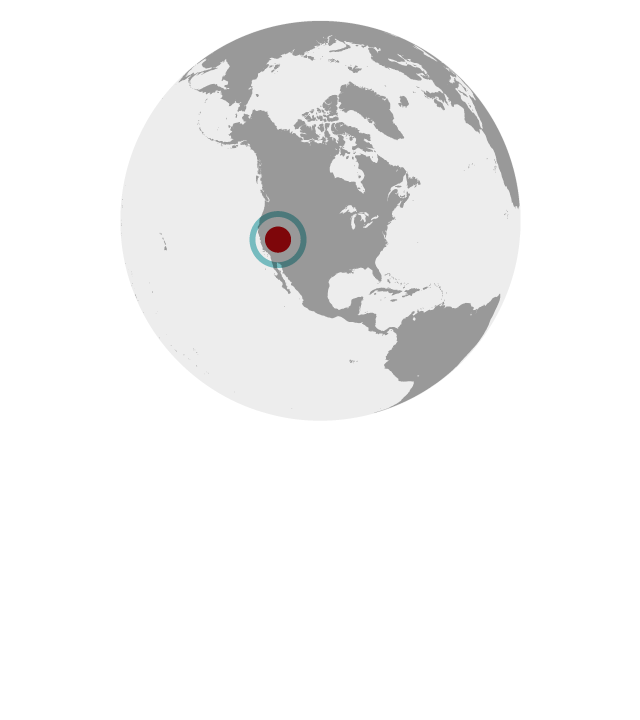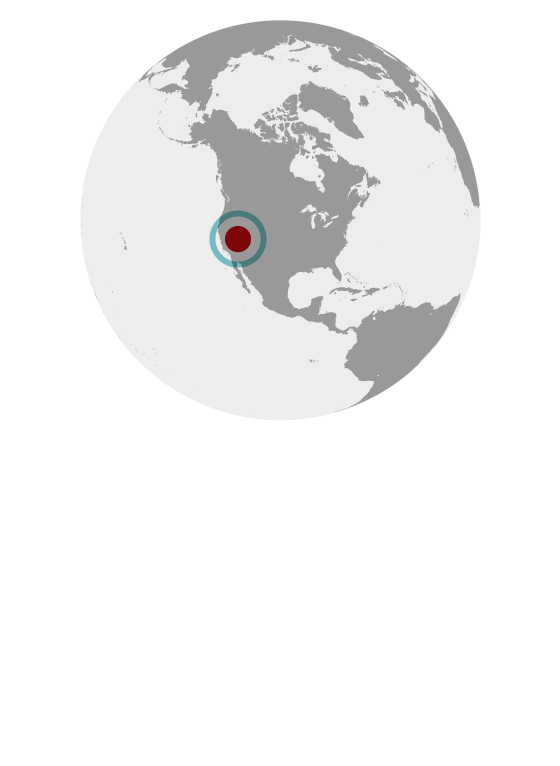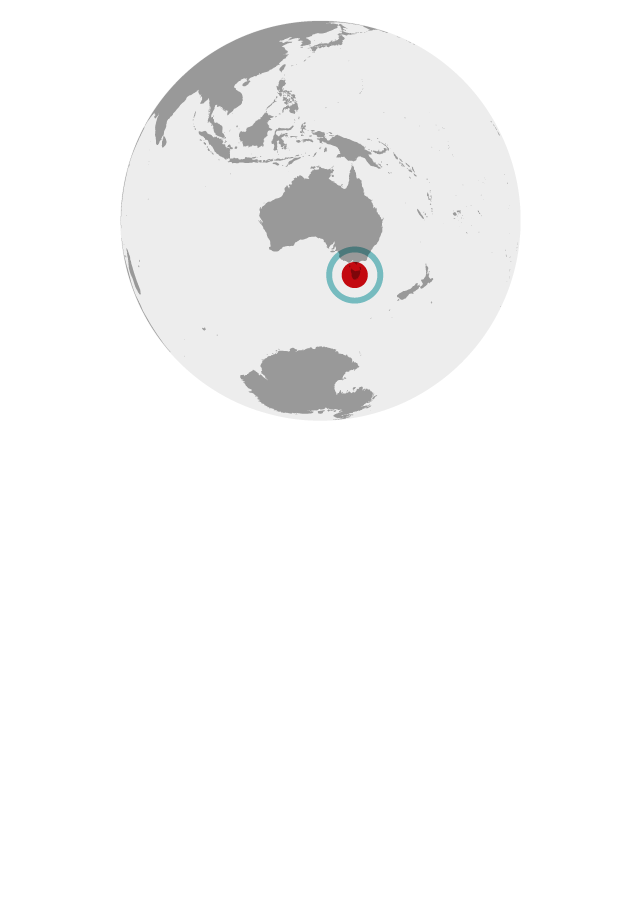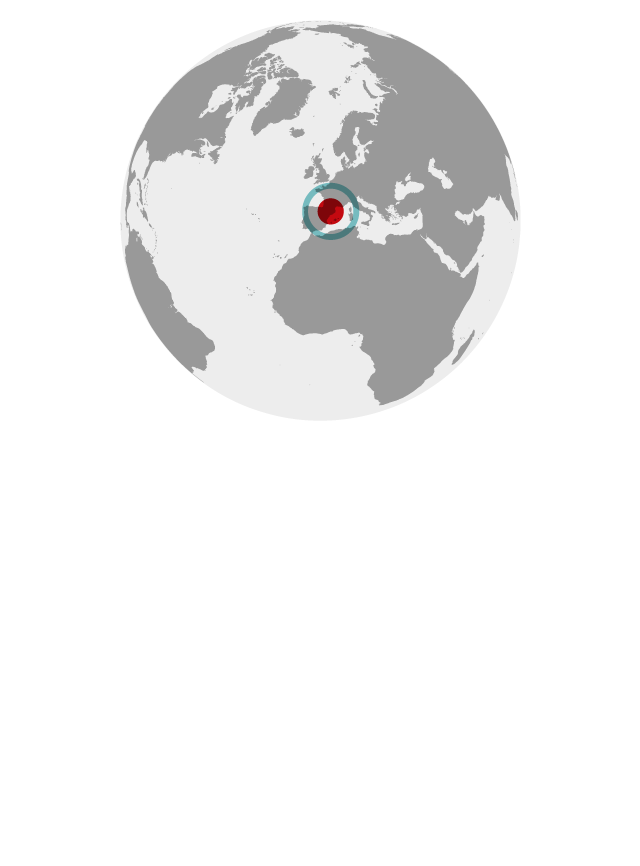Climate refugia: from the Weddell Sea to Jordà beech forest
Some places in the world have become refugia against climate change and give wild species more time to adapt: they are small paradises that should be preserved


It goes without saying that no place in the world is spared from climate change. But as we take a closer look at the concrete impacts of global warming, some areas of hope are emerging where life is making inroads, to the surprise (and wonder) of scientists. A large colony of Adélie penguins managed to remain intact in the Weddell Sea; a lake in Canada's boreal forest refreshes the surrounding environment; and even here in Catalonia, a butterfly that is disappearing due to climate change remains miraculously stable in some parts of the Jordà beech forest.
Some places in the world act as a buffer against the climate crisis and become biodiversity refugia. They give wild species living there a little more time to adapt to the impact of the climate crisis. So much so that, for some twenty years now, there has been a branch of climate science that is specifically dedicated to trying to locate these climate change refugia. The main objective is to learn the mechanisms of adaptation and at the same time to prioritise efforts to conserve them, because these small paradises must be protected.
It is a study, moreover, that learns from the past. "It has been proven that during the last glaciation, some areas of South America and even some small corners of North America remained warmer and became micro refugia for some species," explains Gunnar Keppel, of the University of South Australia, who has been researching this phenomenon for years.
Although current climate change is very different from previous ones – this time the transformation is taking years or centuries instead of millions of years – scientists hope that this time, too, some parts of the world will protect certain species and allow them to survive, even if only for a little longer than the rest. They make climate models to predict where these refugia are and during field expeditions they sometimes discover natural spaces that resist the most serious crisis our planet is facing better than was previously thought.
Articles on the climate emergency often focus on the places on the front line, the ones that are being hit the hardest right now. Today we focus on the opposite extreme. The areas that are being spared for the time being (no one knows for how much longer – that will depend on us humans) and which therfore should be preserved. If greenhouse gas emissions do not stop, these areas will probably not be saved either. But perhaps they will be the last to disappear.
WEDDELL SEA
Very close to where the wreckage of explorer Ernest Shackleton's ship Endurance was found, a scientific expedition made a much happier discovery this January. On three islands in this remote Antarctic sea, 40,000 Adélie penguin chicks were found. This means the populations of this species in the area have remained stable. It came as quite a surprise, considering that only 250 kilometres to the north, in the Southern Ocean, a previous expedition had discovered that the populations of royal penguins on Elephant Island had dropped by 77% in fifty years.
The climate crisis is hitting the Antarctic continent hard, to the extent that in March, Concordia station in East Antarctica recorded a record temperature of -11.8 ºC, about 40 degrees warmer than what is usual for this time of year.
In the northwest, however, the discovery of penguins in the Weddell Sea brings "a ray of hope," in the words of Laura Meller, a Greenpeace biologist who was on board the Arctic Sunrise, the ship that made the discovery. Scientists from Stony Brook University in New York were part of the expedition and, in fact, they were the ones who went onto Devil Island, Vortex Island and Penguin Point to count penguins, in many cases "by hand". "We have to keep a minimum distance of five metres so we don't intrude, but for about six years now we've also been using drones that allow us to count chicks when there are very large populations like these," explains Heather Lynch, who leads the Stony Brook research team, even though she was not aboard the ship. "In research prior to ours, climate models suggested this region would remain stable for longer than other parts of Antarctica, that it would be less impacted [by climate change], but we didn't know whether or not this would help the penguins, and now we know it will," Lynch says. It's proven that this area of the Weddell Sea acts as a climate refugium that preserves both Adélie penguins and other seabirds that have lived there for a long time. Perhaps it has to do, Lynch says, with the fact that "a huge section of the Weddell Sea is covered by a huge ice shelf and there is probably a large ice reserve that provides the habitat required by Antarctic krill," the base of the food chain.
Proposed protected area
Meller highlights the fact that the area "is relatively free from human pressure" and the fishing that does affect the other side of the Antarctic Peninsula, where penguin populations are rapidly declining. For this reason, he says "the area should be preserved" so that it can continue to be a climate refugium. In fact, there has been a proposal for more than ten years to create a large protected area in the region, including the Weddell Sea and the west coast of the peninsula. "It would create the largest marine protected area on the planet, but the body that has to decide, the Antarctic Ocean Commission, has failed to reach an agreement because it is they who also grant fishing permits for krill," says Meller. Next October, the measure will again be debated.
The great ice shelf Lynch mentioned – the one that creates the ideal conditions for krill in the Weddell Sea – is also the one that keeps large-scale fishing away and protects the area from direct human impact. What makes the Weddell Sea today one of the few remaining climatic refuges on the planet is probably the same ice that sank Shackleton's ship over a century ago
CANADA'S BOREAL FOREST
Some 30% of the world's boreal forests are in Canada. It is an ecosystem that is suffering greatly from the impact of the climate emergency, with fires becoming more frequent and intense and permafrost thawing faster than predicted. But it's not all bad news. Scientists such as Diana Stralberg of the Canadian Forest Service, with colleagues from the University of Alberta have been able to identify areas that act as climatic refugia for wildlife. "This lets us know which areas need to be protected the most," she explains. Some of these studies have focused on peat, which accumulates a lot of stored carbon and which in some places has been found to be "more resilient to fire" than others, Stralberg says.
Other analyses focus on mountains, where several songbird species that are highly vulnerable to climate change have a better chance of adapting, given variations in microclimates. But there is still a third area of research focusing on large lakes in Canadian boreal forests. "Lakes absorb heat and reduce the temperature in the area, acting as an air conditioner that cools the landscape. The climate models did not take this effect of the lakes into account, but now we know that in the future they will be able to buffer some of the rising temperatures in the area," says Stralberg. They will be climate refugia. In fact, they already are for some bird species, such as the Cape May warbler in the photo.
The impact of human activity
Locating these sites is useful for focusing conservation efforts. "A lot of refugia research only looks at climate models, but you also have to look at the condition of the forest, to what extent it is intact or degraded by the effect of human activity," notes Hedley Grantham of the Wildlife Conservation Society. The more intact, the more likely it is to act as a refuge. Grantham is involved in a study that has identified some climate refugia in forests around the world, but he cannot advance his results because they have not yet been reviewed.
"Understanding how ecosystems respond to climate change is an ongoing process," Stralberg adds. Understanding where these "climate refugia" are and prioritising their protection, he says, can "give wildlife a better chance to adapt to the conditions the future holds."
THE SARGASSO SEA
The Bermuda Triangle is one of the most interesting points in ocean biodiversity. It is a unique place, because in general the high seas are very poor in nutrients compared to the coasts, which is where most fish and marine animals go to reproduce and feed. Its secret? The sargassum seaweed, which grows naturally in this area and creates an excellent habitat for phytoplankton, the base of the food chain for many marine animals. It is the same seaweed that often washes up on Caribbean beaches which are then forced to close to tourism: another effect of climate change. But in this part of the ocean, however, it is a refuge for many species.
"It is a very important breeding area for eels, for example, and there is also a large presence of breeding loggerhead sea turtles," explains Pilar Marcos, biologist in charge of Greenpeace Spain's oceans campaign. "It is a climatic refuge because biodiversity indexes have remained very stable," she adds. Marcos organised an expedition in 2019 and the only danger they did find were plastics: there are lots of them.
The Sargasso Sea is one of the areas is to be included in the future Oceans Treaty, to be debated in August. It will consider increasing the world's marine protected area to 30%. "It is an area which is in international waters and precisely for that reason it has a high rate of fishing extraction" which should be reduced, says Marcos. Protecting it would not only allow the conservation of a biodiversity refugium, but would also help mitigate climate change, because the sargassum algae, in addition, are a great CO2 sink.
YOSEMITE PARK
"Climate change refugia are areas that are relatively protected from contemporary climate change and that allow valuable ecological, physical, and cultural resources to persist. We arrived at this definition from conversations with natural resource managers, who in fact wanted to add the word valuable because they said that, at the end of the day, we're focused on managing and preserving what society cares about," explains Toni Lyn Morelli, a researcher with the USGS Northeast Climate Adaptation Science Center in the United States. She is part of a group of American scientists who have also focused their efforts on identifying these climate refugia, within the field of climate change adaptation. It is, again, a way to guide conservation efforts.
Within the Sierra Nevada, in the grasslands of Yosemite Wilderness Park in California, Morelli and colleagues have identified dozens of microspaces where a small rodent typical of the area has managed to remain stable: they are the climatic refugia of Belding's ground squirrel (Urocitellus beldingi). "We have studied where it was present a hundred years ago and where it is now, and the places where it can still be found in the same numbers as it used to be could be defined as refugia," Morelli sums up. But he makes it clear that climate refuges "are not areas that are not affected by climate change", because unfortunately the whole planet is affected to a greater or lesser extent, "but they register its effects more slowly".
"[We scientists] often wonder how long this area will last as a refugium, because it won't last forever. Some will remain somewhat cooler than the environment, perhaps too warm for a reindeer but cool enough for a chamois, for example, and then it will be too warm for a chamois too," he notes. They will be the last strongholds of natural life as we know it.
TASMANIA
One of the last places in the world to suffer the arrival of European settlers was Tasmania. Until the 19th century, the island off southern Australia remained isolated from the world and, therefore, preserved. It still has hundreds of endemic plant and animal species, some of which date back millions of years. But it is not spared when it comes to climate change. The impact of this crisis on this part of the world is similar to that suffered by the Mediterranean: longer and more pronounced droughts, heat waves and increasingly intense fires.
That is why, in Tasmania and Australia in general, "climate refuges tend to be those spaces that stay hydrated for longer," explains Gunnar Keppel, professor of environmental biology at the University of South Australia, author of several studies on climate change refuges.
One of them succeeded in establishing, using computer models, the places on the island of Tasmania where its unique flora is most likely to survive in the future. "Tasmania has a few conifer species that are found nowhere else. They have survived only there precisely because the environment has not become as dry as in the rest of Australia. It will be even more difficult for these species to find a safe haven, because that was what they had already found in Tasmania. If they disappear here, they will disappear forever," Keppel explains. According to his research, refugia for this unique flora are in "the most topographically complex areas", that is, where the geography "has more ups and downs" because it helps shelter the plants.
Locating these areas is very important because lots of this ancient flora is already suffering a strong climatic impact. "As the climate becomes drier, a phenomenon is occurring whereby all of this flora is withering and dying back," the scientist explains. Plants which are better-adapted to dry environments then take their place. "This is already happening in many places," he adds
Seeking refuge in forests
It is clear, then, that these spaces where natural life endures must be protected. About 40% of Tasmania's land area is already a protected area, but elsewhere on the planet it is not so.
"Most [climate refugia] are in forest areas," says Marcin Kiedrzyński of the University of Lodz in Poland. Similarly to Keppel's research in Tasmania, Kiedrzyński has also found that in Europe these climate refugia "are connected to steep topographic regions," but notes that "the challenge" for scientists now is to identify refugia "in the lowlands and in rather flat landscapes," where they are more difficult to find because these areas are more exposed to temperature changes and harsh weather.
However, in addition to small spaces or "micro-refugia" such as these, forest expert at the University of Maryland Peter Potapov, creator of Intact Forest Landscapes (IFL), is adamant that "we must find the largest possible spaces that remain intact and unexploited, and preserve them, because the less fragmented and less degraded they are, the more they can act as a refugia from climate change." Large intact natural spaces, such as those remaining in the Amazon or in the tropical forests of Congo and Southeast Asia, need greater protection, he warns. Especially if we want them to be climate refugia for the planet's future.
JORDÀ BEECH FOREST
The green-veined white, a yellowish butterfly that gives off a lemony scent when it flaps its wings, is in decline in a few places in Catalonia due to climate change. But under the treetops in the Jordà beech forest a "microclimate" is generated that is up to 5 ºC cooler than in its immediate surroundings, and this has allowed it to reproduce and grow normally. This is the climatic refugium discovered by the team of scientists headed by Jofre Carnicer, researcher at the CREAF and one of the authors of the latest report on adaptation by the Intergovernmental Panel on Climate Change (IPCC), the UN's climate scientist group.
"We have measured more than 2,000 butterflies and where there are no favourable microclimates, they are getting smaller: from the third generation, the wings get smaller and smaller due to thermal stress," Carnicer explains about the green-veined white. At temperatures above 25 ºC they decrease in size and their survival is in danger, but "microclimates" created by the beech trees in the Garrotxa forest protect them from heat waves and offer them a sufficiently humid habitat to lay their eggs. There "they are always below 30 ºC", says Carnicer. At least until now. Carnicer's team has found, in fact, that in the Jordà beech forest the populations of green-veined whites have remained stable, while in the Llobregat delta and in the wetlands of l'Empordà, which are more exposed, they are becoming smaller and smaller and even disappearing.
"This study intimately links climate change with biodiversity loss, two crises that must be addressed jointly and urgently, as was already warned in 2021 by the world's leading scientific groups on climate and biodiversity, the IPCC and IPBES," Carnicer explains. He advocates continued detailed analysis of climate refugia to "anticipate future scenarios".
In fact, according to another study by University of Lodz biologist Marcin Kiedrzyński, the debate on climate refugia "will increase in response to observed and expected species extinctions due to climate change." These refugia, he says, can serve as "models for observing the response of species to climate change," and "may have a crucial role as potential sources for recovering species in the future."




